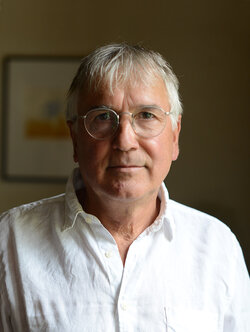Interview with cinematographer Thierry Arbogast, AFC, about his work on Atiq Rahimi’s “Our Lady of the Nile”
Followed by an account by Karine Feuillard, DITThe conflicts and hatred that are dividing the country enter the school and, quickly, we hear these lively young girls pronounce the words that would become familiar to Western ears twenty years later: Hutus and Tutsis. We witness the intimate beginnings of the first genocide. (HdR)
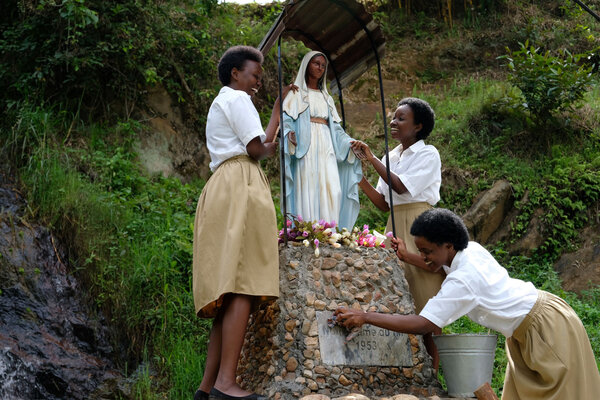
What were Atiq Rahimi’s requests? Did the screenplay already contain his ideas for the visuals?
Thierry Arbogast : I read the novel, and the screenplay was more concentrated and more cinematographic. Atiq had begun to write down where he wanted to bring the film in visual terms. He mentioned dawns and certain ambiances. Atiq is an artist, a writer, he paints, he practices calligraphy, he has taken photographs with a pinhole camera… He always takes a visual approach, and that’s something that is extremely important to him. This isn’t narrative cinema, the narration always comes through poetry, and that is essential. He wasn’t trying to tell the story of the genocide, but rather to create an atmosphere, a feeling, even if above all the film remains the story of those young girls.
He wanted to divide the film into four chapters. That’s not solely a literary approach, even though he is a writer: the film begins with Innocence, then moves on to chapters entitled The Sacred, Sacrilege, and Sacrifice. Our earliest discussions were about those four chapters, and we began our research together. For me, the chapters needed to affect our choice of camera and lenses.
I though the Sony Venice had a great color space for filming those incredible landscapes and the full range of green. I had asked the makeup artist to let the girls’ skin shine, not to mattify them, and to use as little foundation as possible, because they are so beautiful, they don’t need it. I wanted to film the girls very close up, and I liked the idea of alternating them with wide shots. We had a very small budget, so I got a half-series of Master Anamorphic from Next Shot: the 40mm for the wide shots, 60mm for the medium shots, and a 100mm for the close-ups. We used as much of the wide-angle sensor’s surface as we could, so the angle of the field of the 40mm lens was supposed to give the equivalent of a 35mm on a Super 35 sensor, for example, and the 100mm wasn’t really so tight, and must have been equivalent to an 80. I had to get really close to take those close-up shots, and I liked that, alternating them with the lovely wide shots of the church and the landscape.
The characters are constantly going back and forth between the school and the hills, and the camera follows them.
TA : The idea of making camera movements was there early on. I didn’t want to use a lot of Steadicam, and so we carried the camera on our shoulder or did traveling shots on tracks. We shot a little bit with a drone, but that wasn’t easy to do given our budget. I don’t insist on being behind the camera at all times, but naturally I pay a great deal of attention to the composition and the parameters of the shot, and so does Atiq. He paid close attention to the girls’ positions, the angle they would be filmed from, and together we’d look for a way to film them that would be out-of-the-ordinary, such as in the scene where one of them, magnificent in her armchair, poses for the painter played by Pascal Greggory.
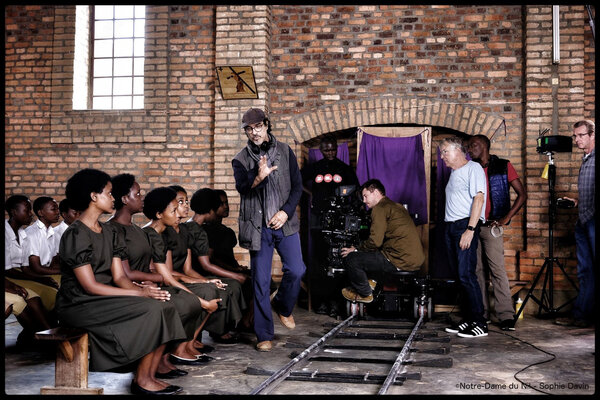
There are a lot of outdoor shots. How did you manage the natural light?
TA : We tried to have sunlight, which wasn’t always easy. But I did have an 18K HMI. We played around with the shooting schedule to prioritize the scenes we wanted to shoot in sunlight and the rain scenes that we wanted to shoot under real rain. In a scene that follows a sunrise, the girls are shown dancing under the rain. We shot using real rain because we didn’t have a way to create rain. Every day we worried about whether or not it would rain!
We had to work quickly, the shooting schedule was very tight. We’d take about twenty shots per day. Atiq likes long takes. For example, on that scene with the dancing under the rain: besides the shots planned with the Venice, I’d placed an α7s on the ground with a 25mm Leica M 0.8, also from Next Shot. I liked the composition of that wide shot, even though I had to readjust it when the girls moved and to wipe away the rain that was dripping onto it. It was an “extra” scene and when Atiq saw the dailies, he said “That’s the shot!”. He didn’t use the others.
When we screened this film, producer Marie Legrand said it was impossible to take ugly shots in Rwanda, because everything is so beautiful it doesn’t matter where you put the camera.
The landscape is magnificent but we weren’t trying to film the landscape, the film remains anchored in the story, and centered always on those characters. The main location is the school, which like many buildings in Rwanda, is built on a hilltop. The country is made up entirely of hills, and the terrain is constantly going up and down, and even on foot it’s tough. The school and the hospital are adjacent to one another, and are very hard to get to, and are supplied in medications from Kigali by drones that make three to four rotations per day… Initially we weren’t permitted to shoot in the chapel, which is immense, but we were able to negotiate permission at the last moment, because we couldn’t find an alternate location and it really came as a relief to us.
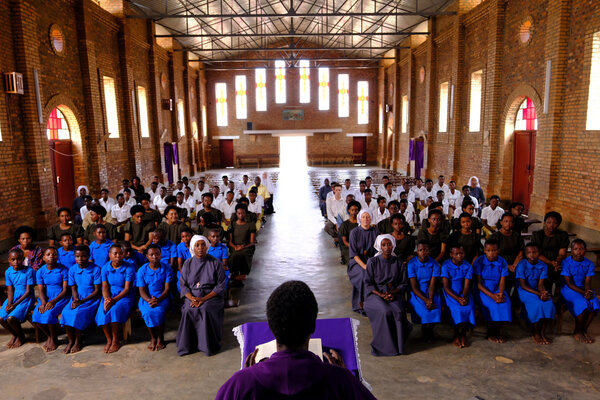
What kind of lighting did people have back then? Were there fluorescent lights in the school?
TA : At that time, fluorescent tubes were credible. There wasn’t much electricity back then, but we thought that a prestigious school might have had electricity. When they leave the church at night, we just put a single lamp. For the painter’s studio, the set designers rebuilt a ruined outbuilding nearby.
How did you come up with the Egyptian-inspired fresco in the painter’s studio, which is the scene of a very striking dreamlike scene at the end of the film?
TA : We were meant to paint it in real life, but we never did. Atiq called on me to find ideas for how to show the characters coming out of the wall, but without special effects. The characters were to scale, so I said: “If we can paint the fresco based on the actors, we will film them in front of it and we’ll do a sort of fade.” But Atiq wasn’t sure he’d be able to find the right person to paint it, and the style he wanted wasn’t clear yet… At a certain point, I decided we’d use a green screen the size of the fresco. When everyone agreed on the appearance of the warriors, we put them on top of the green screen. I took photographs of characters in the fresco with my D800, right next to the film camera, and we filmed them coming towards us. Using the photograph, an artist drew the fresco with the stylized characters. We made the special effect as simple and as uncomplicated as possible.
That was also the case for the scene where one of the young girls is walking in the tropical forest and happens upon the Virgin Mary in a dream. The young girl, the cows, the warriors she meets and the Virgin were filmed on a blue screen in a banquet hall that had been set up as a studio next door to our hotel. The tropical forest, with its magnificent maze, the steps in black volcanic rock that gave an Amazonian appearance, was in fact located 250km away from the main location.
What workflow did you choose to shoot so far away from any laboratory?
TA : I brought Karine Feuillard along with me as my DIT. She had created a LUT, and she would color grade the dailies every evening. She had a lot of work: she would make the backups, and she would color grade and pre-color-grade the dailies. She had to train a Rwandan assistant to take care of the backups for her, and the dailies were stored on three towers purchased by the producers, because it was too expensive for us to give them to a lab.
Color grading was done by Peter Bernaers, an excellent and quick technician with taste. He started with the raw images but we had the reference styles we’d made with Karine on an iPad, which I used from time to time. There is softness in the faces and in the lighting, but the image isn’t “flat”. It’s very sharp, well-redefined, and that’s what I like about the Master Anamorphics, you can see the texture of skin but it doesn’t give a hard image, from my point of view. I worked at full aperture (T1.9) for darkest night like when they break the Virgin’s nose (their flashlight is a genuine article from the 70s, made of aluminum, with its original filament and no overvoltage), with very open shutter at 2,500 ISO. We were pushing the signal to its limits!
Yes, there is a lot of play with the shutter, both open and closed.
TA : For the genocide at the end, the Venice was at 12 frames per second and its shutter was very closed. I used the photo camera at 6 frames per second, with a very open shutter. In postproduction, we remultiplied the images at 24 fps. We shot the entire genocide that way, except for a long take with the shutter at 45° to create a bit of strobing. I filmed the same scenes with both cameras side by side, me with the photo camera and the cameraman with the Venice on his shoulder. We did it on purpose and it was irreversible: nothing was shot at 24 fps and we had not safety net! When it came to color timing, we decided to go with bleach bypass for that scene. We had to identify a treatment able to distance the violence of the genocide. In the end, I’ll say that this is my second film with Atiq, and like Syngue Sabour, his artistic and poetic approach is very unique. The challenge is getting into his cinematographic universe, but he is able to guide you in the right direction.
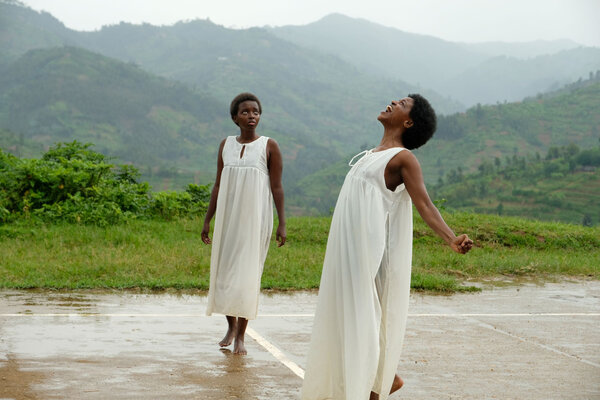
A rural workflow – by Karine Feuillard, DIT
The Venice was chosen for rather obvious reasons: it has dual exposure and back in 2018, it’s 2nd firmware allowed for shooting in XOCN XT rather than RAW, which allowed us to reduce the size of the dailies while maintaining excellent quality. We were able to do this because Atiq is precise and doesn’t do a lot of takes, even though he leaves the actors a wide berth. Thierry insisted on shooting in anamorphic and the Venice’s wide-angle sensor is perfectly adapted to that.
On the ground, we had to deal with a great deal of instability regarding the availability of electricity. We had a generator for the indoors locations, but most of the outdoor locations were shot in the hills, and so we had to carry everything on our backs: obviously we couldn’t take the generator. Furthermore, the batteries that power the DIT’s cart (providing 220V) aren’t permitted on commercial flights. So I would use two different setups: when I had electrical power, I would work with FilmLight (PreLight for color timing on set) on my DIT cart on a calibrated 24” OLED monitor. Otherwise, my all-terrain station was a calibrated 17” OLED battery-powered monitor and a laptop, especially in order to make an initial backup, so that there would be at least one copy made at the end of the day, on an SSD drive that did not travel in the same car as the cards. In rural mode, I wouldn’t do live color timing touchups, I would only use our Show LUT, but I would take notes to prepare the color timing I would have to do that evening. Then I would launch transcoding at night, when there were no problems with the electricity!
The lab colorist and I created a Show LUT that was very similar to the Sony-supplied LUT REC 709 (we were recording in Slog3) but we thought it was a bit too harsh, so we reduced the contrast a bit. That was the basis I used for giving Thierry and Atiq dailies every evening.
We had several surprises during the scenes where the young girls are in their dormitories in white nightshirts. That scene had to be dense, but the girls’ shirts were made out of a synthetic fabric that wouldn’t take the dye we usually use to reduce the whiteness and prevent it from being too reflective. The shirts absorbed all the light, even when there wasn’t any lighting at all! Rather than overexpose, Thierry decided to light more in order to reduce the contrast and then bring everything back down in color timing, in order to preserve the impression of darkness.
We also had additional cameras, such as the DJI Mavic 2 Pro drone and the α7sII which needed work to match them with the Venice’s images. The α7sII’s dynamics and color depth aren’t at all the same. It works with images without much light, because the sensor’s sensitivity is greater than the color rendering, but for day scenes, it was very hard to degrade the Venice’s signal. For the drone, we took the best from the on-board camera’s RAW footage in order to match the Venice’s images, even if we had to progressively degrade a few scenes to help the transition, without denaturing an entire scene.
There were experiments on a few sequences where we changed our mind several times. For the genocide, in particular, for the violent parts where the viewer understands what is going on, we went from black and white to a more washed-out appearance, and ended up on bleach bypass, and also played with the blur and slow motion. That scene required a lot of tests before final color timing.
(Interview with Thierry Arbogast and Karine Feuillard by Hélène de Roux on behalf of the AFC, translated from French by A. Baron-Raiffe.)
 En
En
 Fr
Fr